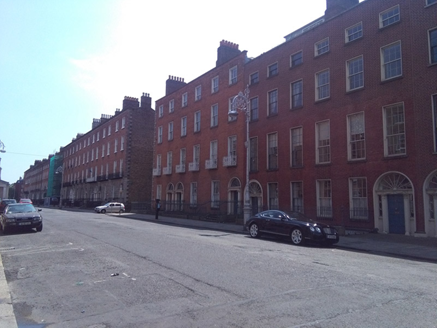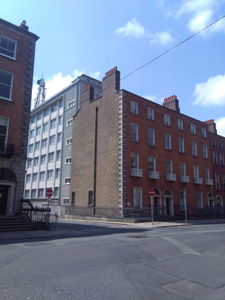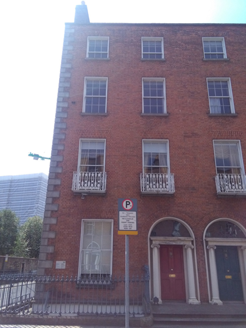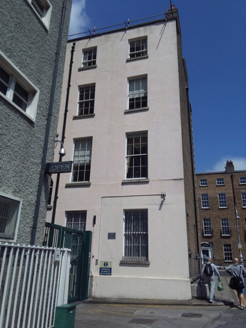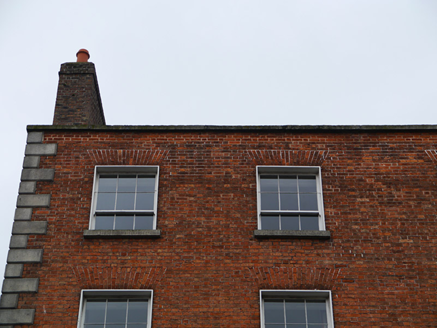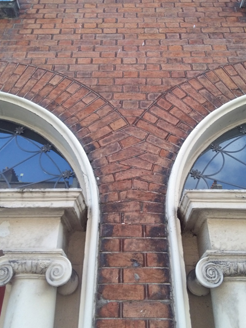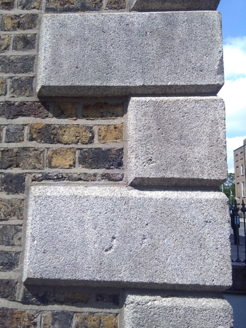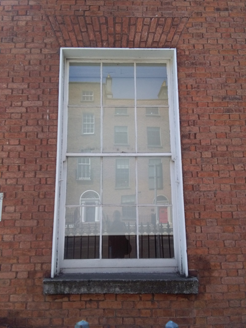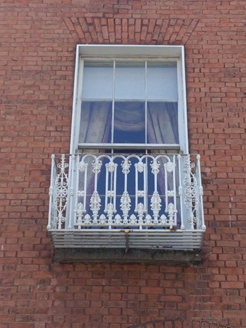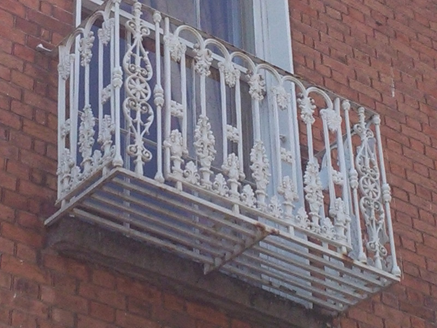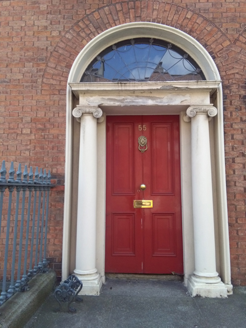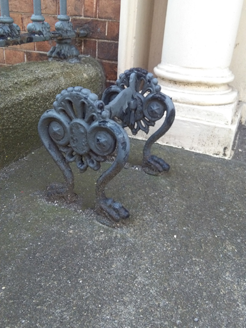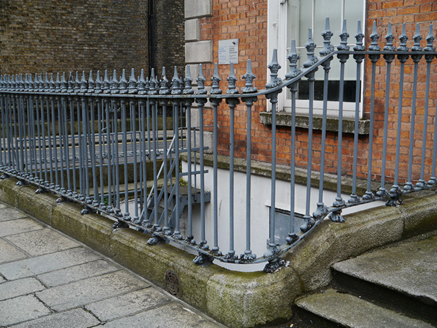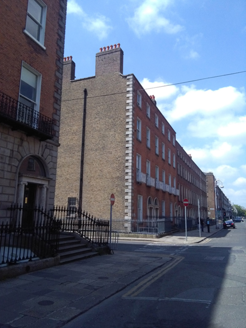Survey Data
Reg No
50100604
Rating
Regional
Categories of Special Interest
Architectural, Artistic
Original Use
House
In Use As
Office
Date
1790 - 1830
Coordinates
316827, 233353
Date Recorded
10/06/2016
Date Updated
--/--/--
Description
Corner-sited two-bay four-storey former house over basement, built c. 1810 as end one of terrace of three houses, with two-bay side elevation. M-profile pitched slate roof, hipped to west end of front span, concealed by brick parapet with granite coping and parapet gutters, and having red brick chimneystacks to east with terracotta pots, and with cast-iron downpipe to east. Flemish bond red brick walling, having rusticated granite corner quoins, on masonry plinth course over painted smooth-rendered basement; yellow brick walls to east elevation; painted render to rear. Square-headed window openings, diminishing in height to upper floors, with patent reveals and masonry sills. Replacement timber sliding sash windows with simple horns, six-over-three pane to top floor, three-over-six pane to basement and six-over-six pane elsewhere; rear and side elevations have timber sash six-pane windows. Cast-iron balconettes to first floor of front elevation and wrought-iron grilles to east and rear ground floor windows. Wide metal door to front basement. Round-headed principal doorway with painted masonry columns, Ionic capitals, plain entablature, leaded batwing fanlight and four-panel timber door with beaded muntin and brass furniture. Shared granite platform with cast-iron boot-scrape and two steps to street level. Basement area to north and east enclosed by decorative spear-headed cast-iron railings on moulded granite plinth. Abutted to rear by late twentieth-century buildings.
Appraisal
An early nineteenth-century Georgian row house forming the east end of a terrace of three (Nos. 55-57). Although some historic fabric has been lost, the overall character of No. 55 has been retained and it constitutes an important component of the streetscape. It displays a fine Ionic doorcase, fanlight, ornate balconettes and intact setting details. Its siting gives it prominence in the streetscape and its contrasting wall treatments to the front, side and rear elevations provides textural interest to the setting. Laid out in the 1780s and principally developed by Mr Osburne and David Courtney, this street was built to link the newly constructed Grand Canal to the upper-class residential developments radiating from Leinster House since the construction of the latter in the mid-eighteenth century. Built in pairs and rows over a period of thirty years, the fifty-four houses within the street were completed by 1834. The refined terrace is characterized by well-balanced proportions and good doorcases, typical of the period. Variations within the street, such as differences in parapet heights, are a telling feature of its piecemeal development. The street is terminated at its east end by St. Stephen's Church end, providing an impressive landmark focus that, together with the tall terraces of houses, creates a high-quality urban space and one of the iconic vistas of Georgian Dublin.
